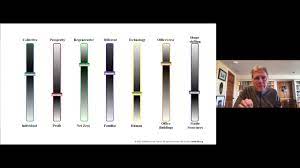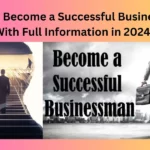The work we do is the way we collaborate to accomplish things. It was the case that in past times, the majority of work in the field of knowledge was done within and around office buildings. Many managers still believe that the culture of an organization must be developed and maintained through meetings in offices However, new ideas are emerging all over the world.
After the drastic shifts brought on by COVID-19 which forced many office workers into virtual work, people who had no offices proved to be extremely productive. With the advent of ubiquitous connectivity, effective remote work provided a unique opportunity to question the assumptions and expectations of office work.
The next “officeverse” will be the any time, anywhere world of which we’ll be working, when we will be working and the way we’ll work. One way to prepare for the future officeverse is to look 10 years in the future, and envision how the future of work will appear, and assist to determine the direction of the future but remain flexible with the execution. This type of “futureback” thinking — in contrast to present-forward assists us in working backwards from the future to make better decisions now. However, present-forward thinking focuses us in the present problems. Futureback can help us predict the future to help us make better decisions, stimulate insights and coordinate actions on the best time, place and the manner in which office tasks should and should be conducted.
If you think about the future 10 years from now it is obvious that sensors will soon be all over throughout the office and in the office realm. The direction of evolution for sensors is evident when you consider the future however the implications aren’t. Other elements are likely to influence the office world, such as VR, humans enhancement via computer systems, Web3, gaming skills, AI applications like Chat GPT and Midjourney, as well as the increasing number of natives who are digital.
In other words, unimaginable scenarios are more likely to become feasible in the next 10 years.
To be ready for the potential opportunities that exist in the office world Every office worker, company, or policymaker should inquire, in this the following order:
- What’s the goal of your office and what is the purpose of officing?First, consider the personal advantages to those working in officesparticularly young people. Ask about the collective goals for groups and communities. It’s not an either/or decision It’s a spectrum that spans the two extremes of both the individual and the collective. “Purpose” should be your first choice of spectrum. What is the reason you need any office space at all?
- What are the outcomes you hope to achieve by your office and office tasks?
What are the results your office is trying to achieve? What outcomes are you looking for from your stakeholders and shareholders? While the purpose of your organization is to create goals, outcomes are about outcomes — and the results you want to achieve will depend on your and your company’s values systems. - What is the environmental impact on your office buildings and your work practices?
The most significant outcome in the next decade is the effect on the climate. In the past, office buildings have proved more harmful on the earth than beneficial. Net-zero impacts, in which your office or its activities don’t contribute to the emission of greenhouse gases within the environment, must constitute the minimum. - Who do you want to be in office?
Imagine this as the broad spectrum of belonging. In traditional offices the employees are alike in appearance, dress and converse similarly. The familiarity of the workplace leads to comfort and cooperation. It also fosters understanding. However, if you look ahead diversity will be everywhere and workplaces will have to be able to think about acceptance and belonging. In the near future diversity will be a expected and intentionally different will be the goal. - How can you increase the power of your workplace?
This is the broad spectrum of the term “augmentation. If you think about the future, how can you best blend what you do with what machines do. What are the areas of your job that require the most improvement? What are the tasks you would like to keep for humans, and which are you able to augment? - What time and place do you plan to work?
Accepting the new way of working that allows us to work from different locations as well as at various times breaks both the temporal and physical dimension of office. Take a look at the best options for coordinating how you work what, where and when it’s completed. - How can you create an efficient, flexible office?
How do you tie it all together and remain resilient in a complex future? Agility is the capacity to be on time and react in coordinated ways that are quick, strong as well as balance and grace. As command and control structures shift to braids that shift shape, workers will be able to transcend the boundaries of the traditional organization structures and develop the collective intelligence of the group to inspire action.
The seven questions illustrate the need for clarity and flexibility even in times of immense uncertainty. Try to make your choices more consistent within each of the roles you take on with an aim of improving interactions, enhancing the work environment, and strengthening connections.















